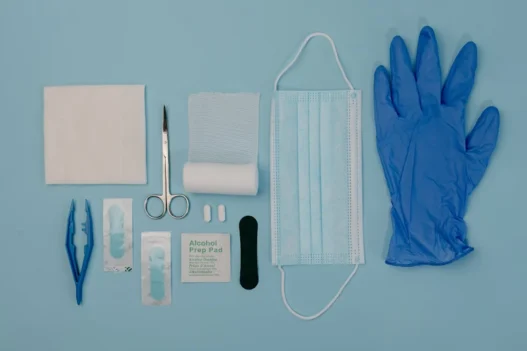0PSJ0DZ is a surgical procedure where the left radius bone is repositioned using a hybrid external fixation device through an open approach. This technique helps stabilize the bone and promote proper healing.
Table of Contents:
- 🔎 Clinical Indication
- 📋 Preparation
- 📖 Methodology
- 🩹 Recovery
- 🚨 Complexity & Risk
- 🔀 Similar Procedures
🔎 Clinical Indication
Repositioning the left radius with a hybrid external fixation device using an open approach may be necessary in cases of severe fractures or injuries where traditional casting or splinting methods are not sufficient to properly realign the bone.
This procedure allows for precise realignment and stabilization of the radius bone, leading to improved healing outcomes and reduced risk of complications such as nonunion or malunion.
By using a hybrid external fixation device, surgeons can more effectively manage complex fractures and ensure proper alignment of the bone for optimal recovery and functional restoration.
📋 Preparation
Before undergoing the 0PSJ0DZ procedure, patients will need to have a comprehensive evaluation by their healthcare provider to assess their overall health and determine if they are a suitable candidate for the surgery. This may include various tests and screenings to ensure that the patient is in optimal condition for the procedure.
In addition, patients will likely meet with their surgeon to discuss the specifics of the surgery, including the risks and benefits, expected outcomes, and post-operative care. This preoperative consultation allows the patient to ask any questions they may have and provides the surgeon with an opportunity to address any concerns or uncertainties.
Patients may also be instructed to follow certain preoperative guidelines, such as fasting before the surgery or taking certain medications as directed by their healthcare provider. It is important for patients to adhere to these guidelines to ensure the success of the procedure and minimize any potential complications.
📖 Methodology
During 0PSJ0DZ, surgeons reposition the left radius using a hybrid external fixation device through an open approach. This involves manipulating the bones in the left forearm to restore proper alignment. The external fixation device helps stabilize the bones while they heal in their new position.
🩹 Recovery
After a procedure like repositioning the left radius with a hybrid external fixation device using an open approach, recovery entails avoiding putting weight on the affected arm for a period of time. This is to allow the bones to heal properly and regain strength.
Physical therapy may be recommended to help improve range of motion and strengthen the muscles around the injured area. It is important to follow the recommended rehabilitation plan and attend follow-up appointments with your healthcare provider to monitor progress and address any concerns promptly.
🚨 Complexity & Risk
Performing 0PSJ0DZ involves repositioning the left radius using a hybrid external fixation device through an open approach. This procedure is complex because it requires precision in realigning the bone properly to ensure proper healing and function.
There are potential risks to patients undergoing this procedure, such as infection at the surgical site, nerve damage, and blood vessel damage. Patients may also experience complications related to the fixation device, such as loosening or breakage, which could require additional surgeries to correct.
🔀 Similar Procedures
A similar medical procedure to repositioning the left radius with a hybrid external fixation device is the repositioning of a dislocated shoulder with an arthroscopic procedure. Both procedures involve realigning a bone or joint back into its proper position using a minimally invasive approach, typically resulting in faster recovery times and reduced risk of complications compared to traditional open surgeries.
In the case of a dislocated shoulder, an arthroscopic procedure allows the surgeon to visualize and manipulate the joint using small incisions and a tiny camera, minimizing tissue damage and post-operative pain for the patient. This results in a quicker rehabilitation process and a lower risk of infection or scarring compared to a more invasive open surgical approach.
Overall, both the repositioning of a left radius with a hybrid external fixation device and the repositioning of a dislocated shoulder with an arthroscopic procedure showcase the advancements in modern medicine, offering patients less invasive options for correcting orthopedic injuries while promoting faster recovery and better outcomes.

